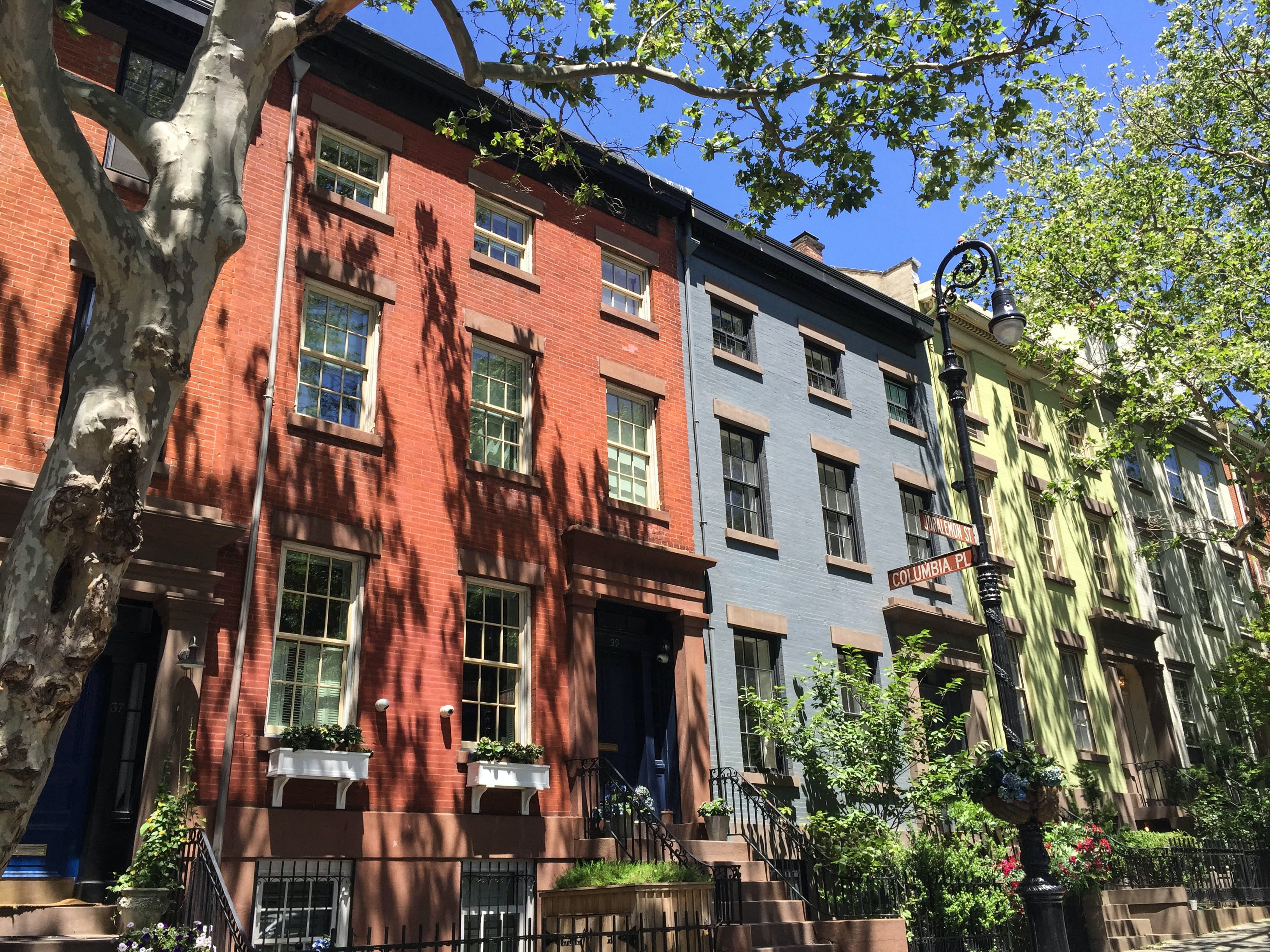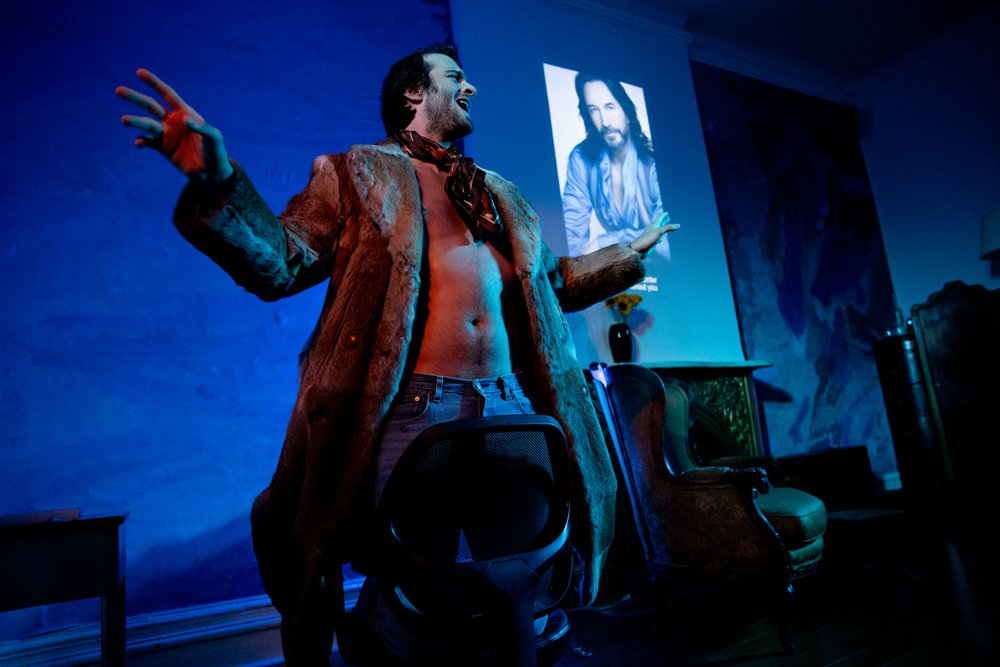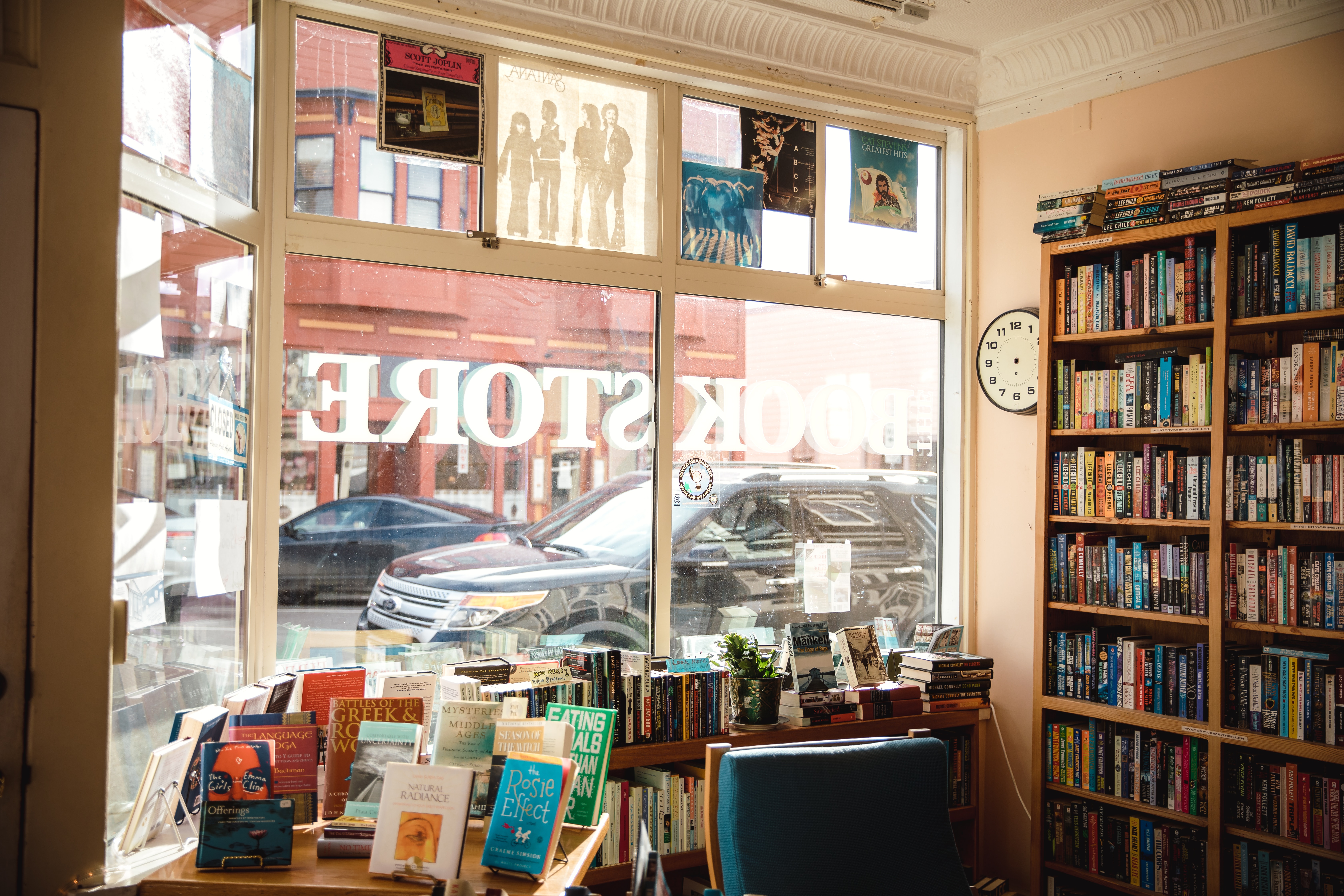
I live in Brooklyn. By choice. Those ignorant of its allures are entitled to wonder why. For, taken as a whole, it is an uninviting community. A veritable veldt of tawdriness . . . Yet, in the greenless grime-gray, oases do occur, splendid contradictions, hearty echoes of healthier days. Of those seeming mirages, the purest example is the neighborhood in which I am situated, an area known as Brooklyn Heights.
-Truman Capote, A House on the Heights
It’s interesting that Capote painted the rest of Brooklyn in such a seedy light in the memoir of his time in Brooklyn Heights, given the “tawdriness” of much of the literature written in his own beloved neighborhood—not to mention the true stories attached to the people who wrote it. Walking just a few blocks in the northwest part of the ‘Heights,’ you can pass by the townhouse where Norman Mailer wrote The Naked and the Dead (when he wasn’t stabbing wives and head-butting Gore Vidal), the brownstone where Arthur Miller penned The Crucible, and the apartment where Capote himself finished In Cold Blood and Breakfast at Tiffany’s.
(For those who are familiar with the movie and wondering how the original version of Breakfast at Tiffany’s could possibly be considered scandalous: Capote’s Holly Golightly is a little dirtier and lot more racist than Audrey Hepburn’s.)

“There are wheels within wheels in this village, and fires within fires!”
-Arthur Miller, The Crucible
New Yorkers, even those who have spent a significant amount of time in the neighborhood, can be forgiven for not knowing the extent of Brooklyn Heights’ rich and often sordid literary history. If you’ve walked the streets, you were probably too busy dodging double-barreled strollers and conspicuously dressed-down affluent types to stop and read all of the multiple plaques that are affixed to brownstones throughout the neighborhood, announcing the former presence of a novelist, playwright, or poet. But collectively, those plaques serve as proof that Brooklyn Heights has, over the years, been home to some of America’s finest (and tawdriest) writers.
The author most strongly associated with Brooklyn Heights’ literary tradition is, of course, Truman Capote, who managed to charm his way into taking up residence in the bottom two rooms of a townhouse at 70 Willow Street after plying the owner with martinis. Still immaculate, the Greek Revival dwelling is his eponymous House on the Heights. It was there that he wrote the memoir and, when he had it to himself, gave tours of the place as though he was the owner.

Arthur Miller lived in several places in the neighborhood, including a building on Pierrepont—which happens to be across a courtyard from where I currently live—and a brownstone he bought at 31 Grace Court, where he completed Death of a Salesman (he later sold the place to W.E.B. Du Bois). Miller’s last home in Brooklyn Heights was a townhouse at 155 Willow Street. He moved into the house in 1951, promptly began an affair with Marilyn Monroe, and moved out of the neighborhood for good when the two married.
Norman Mailer spent most of his time in the neighborhood living on the top floor of 142 Columbia Heights. Everyone from Jackie Onassis to Hunter S. Thompson to Kurt Vonnegut attended parties at the apartment, which Mailer gave a seafaring motif, complete with a teak-clad ceiling and a crow’s nest. Just down the street at 110 Columbia Heights, the poet Hart Crane moved into a now-demolished commune after, as Capote put it, “riding in on the initial wave” of “brigades of the gifted.” Novelist John Dos Passos started writing Manhattan Transfer while living in the same building.
In the southeast corner of the Heights, H.P. Lovecraft wrote the story “The Horror at Red Hook” about his time at 169 Clinton St. A few blocks away, at the end of Montague Street, sits the spacious corner townhouse where W.H. Auden wrote much of “New Year Letter.” And a couple doors down from there is the Italianate brownstone where Thomas Wolfe briefly lived and worked. It was there that Wolfe completed Of Time and the River and became what Capote called a “noted prowler of the Brooklyn night.”

“Poetry might be described as the clear expression of mixed feelings.”
-W.H. Auden, “New Year Letter”

“Only the dead know Brooklyn”
-Thomas Wolfe
Considered one of the most risqué writers of the early 20th century, Henry Miller was raised in Brooklyn. But he harbored a deep hatred for his one-time home; so, it’s almost fitting that the current owners of his former residence on Remsen Street put out his skeleton every year for Halloween, as though he were never able to leave.

“The aim of life is to live, and to live means to be aware, joyously, drunkenly, serenely, divinely aware. In this state of god-like awareness one sings; in this realm the world exists as poem.”
-Henry Miller, The Wisdom of the Heart
The most notorious home of the “brigades of the gifted” who lived in Brooklyn Heights was February House, so named because several of its residents had February birthdays. Located at 7 Middagh St., the house has a well-chronicled history. George Davis, who was at the time the literary editor of Harper’s Bazaar, set it up as a sort of creative retreat after renting the house for $75 a month. Seventy-five. Dollars.
Carson McCullers was one of February House’s first residents, fresh off of finishing The Heart is a Lonely Hunter, and Auden stayed there while completing “New Year Letter.” Two of Thomas Mann’s children also lived in the house, along with the famous stripper Gypsy Rose Lee. There was, allegedly, some drinking.
Sadly, February House was torn down to make way for what Capote described as the “necessities of some absurd civic project.” Knowing now that the absurd civic project was the BQE, I think we would all agree with this description.

“[Brooklyn Heights] continued to possess, cheap rents aside, some certain appeal brigades of the gifted—artists, writers—began to discover.”
-Truman Capote, A House on the Heights
Even though the quiet neighborhood shows only a few signs of being a former enclave for literary giants, Brooklyn Heights acquires a much more vibrant, almost scandalous patina when I remember the history that has seeped into its sidewalks and nautically themed apartments. It’s as though ol’ Norman is still here, walking the streets, head-butting rivals, and writing masterpieces.




